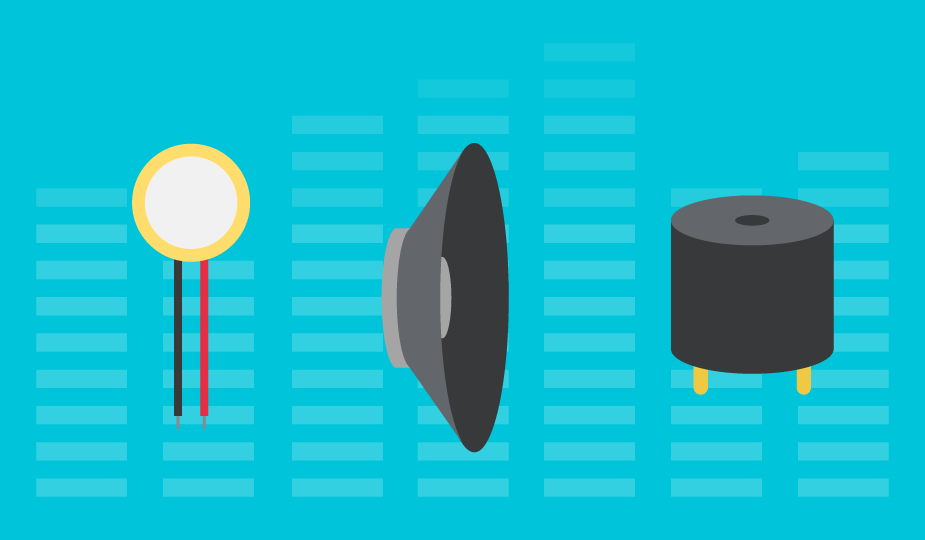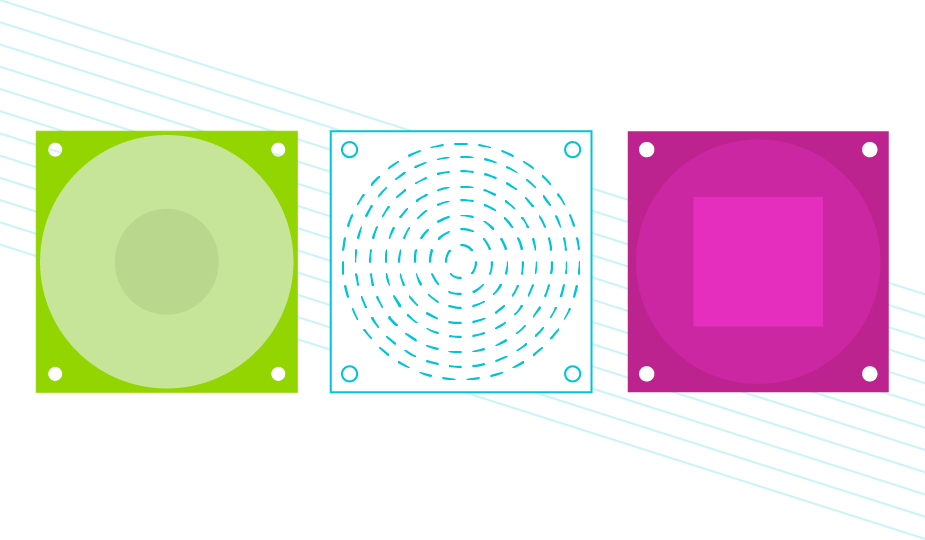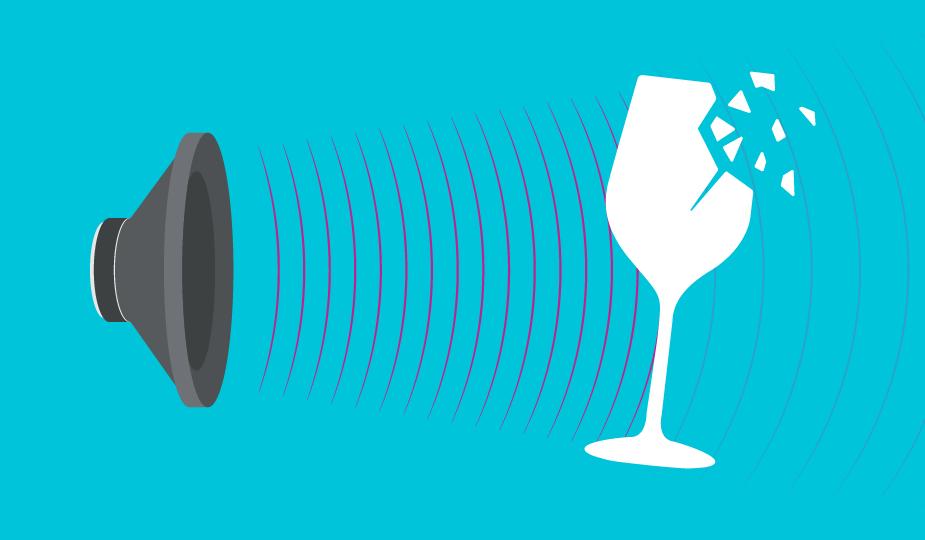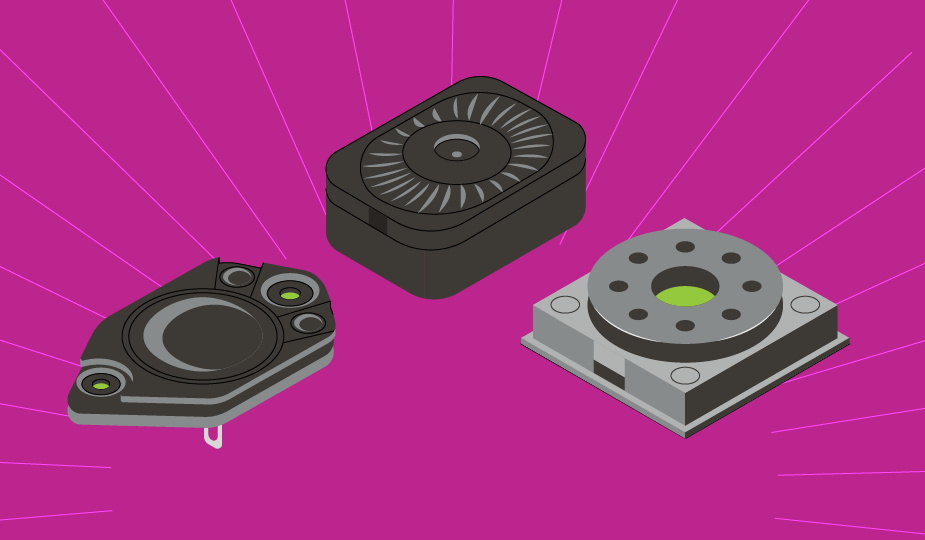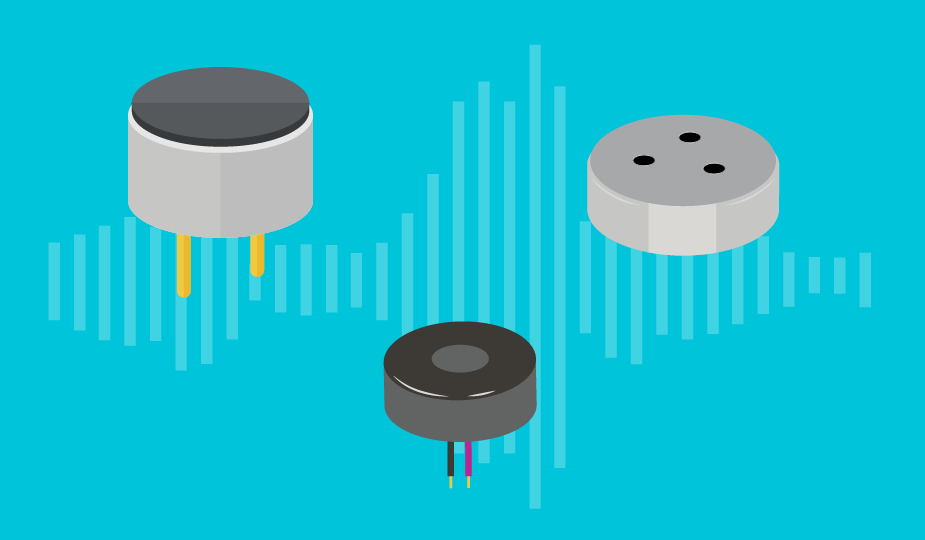Understanding Audio Frequency Range in Audio Design
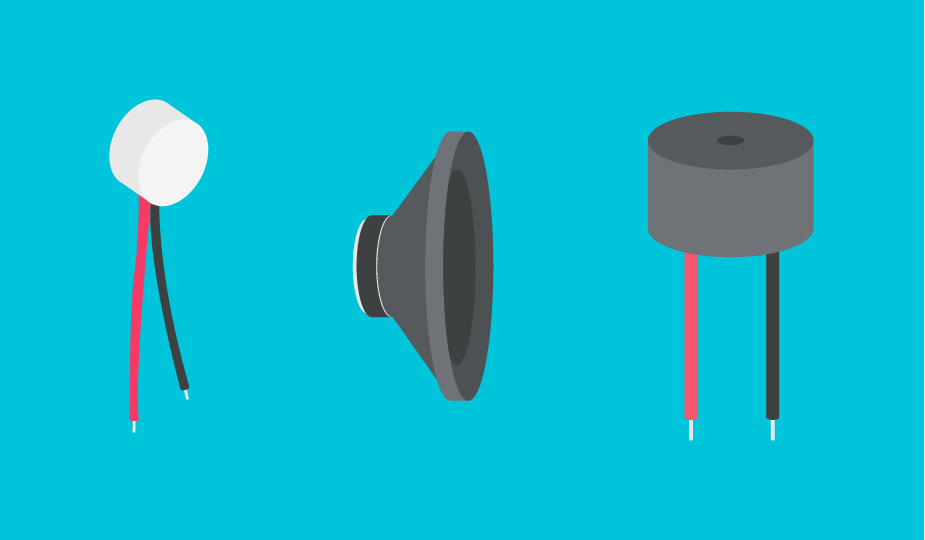
When creating an audio system, whether it is for a house, a car, or an embedded or portable device, there is always a balance between cost, size, and quality. Quality has many contributing factors but one of them is the ability for a system to recreate the whole range of audio frequencies needed. This blog will discuss those frequencies and their various subsets as well as how they impact the design of audio enclosures. It will also shed some light on when the different audio ranges are needed and when they are not in an end application.
What is the Audio Frequency Range?
The generally established audio frequency range is 20 Hz to 20,000 Hz, though most people can hear less than this entire range, and as they get older, the range tends to contract on both ends. The relationship between music and audio frequency is that each time you move up an octave, you double the frequency. With a piano, the lowest note, an A, is approximately 27 Hz whereas the highest note, a C, is about 4186 Hz. Besides these fundamental frequencies, nearly anything that creates sounds also generates harmonic frequencies, which are multiples of higher frequencies, but at a lower amplitude. For example, that 27 Hz “A” on the piano also produces a 54 Hz harmonic that is much quieter, as well as an 81 Hz harmonic that is even quieter, and so on. These harmonics are important for high fidelity speaker systems that want to accurately recreate the original source.
Audio Frequency Subsets
Within the 20 Hz to 20 kHz audio frequency range, there are seven subsets of frequencies used to help define the ranges that may be targeted in designing systems for either recording or playback.
| Frequency Subset | Frequency Range | Description |
|---|---|---|
| Sub-bass | 16 to 60 Hz | This is the low musical range - an upright bass, tuba, bass guitar, at the lower end, will fall into this category |
| Bass | 60 to 250 Hz | This is the normal speaking vocal range |
| Lower Midrange | 250 to 500 Hz | In the lower midrange are typical brass instruments, and mid woodwinds, like alto saxophone and the middle range of a clarinet |
| Midrange | 500 Hz to 2 kHz | The name may be midrange, but it is on the higher end of the fundamental frequencies created by most musical instruments. Here, one can find instruments like the violin and piccolo |
| Higher Midrange | 2 to 4 kHz | As mentioned, harmonics are at multiples of the fundamental frequency, so if expecting the fundamentals for a trumpet to be in the lower midrange, one can expect the harmonic to be at 2 times, 3 times, and 4 times that fundamental, which would put them in this range |
| Presence | 4 to 6 kHz | Harmonics for the violin and piccolo are found here |
| Brilliance | 6 to 20 kHz | Above 6 kHz is where sounds become more like whines and whistles because they are so high pitched. In this range, sibilant sounds (the unwanted whistle when sometimes pronouncing an ‘s’) and harmonics for certain percussive sounds like cymbals are found |
Frequency Response Chart
A great way to see how a speaker, buzzer, or microphone can reproduce these different frequencies is with the frequency response chart. In general, buzzers carry a narrower frequency range because they are only tasked with outputting an audible tone, whereas speakers offer a wider range to recreate sounds and voice.
When it comes to speakers, buzzers, and other output devices, the y-axis on a frequency response chart is in dB SPL or decibels of Sound Pressure Level (roughly interpreted as loudness). For microphones, as they are detecting instead of producing sound, the y-axis is measuring sensitivity in dB. In the example below, note that the x-axis is frequency (on a logarithmic scale) and since the y-axis is dB SPL, it is known that this chart is for a speaker or other output device. Remember that decibels are also logarithmic, so both the x and y axes are logarithmic.
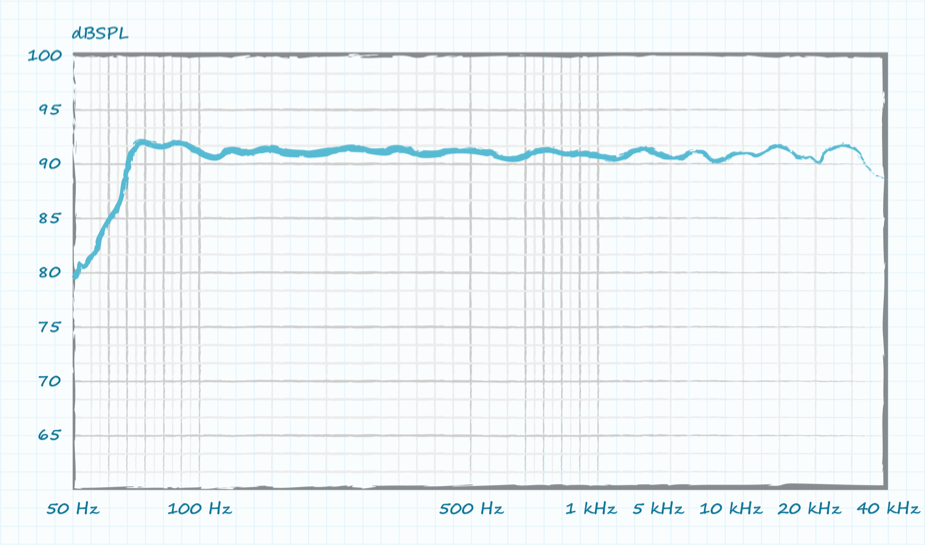
This chart represents how many dB of SPL will be produced with a constant power input at different frequencies. In this case, the output is rather flat with a sharp drop off below 70 Hz and a shallower drop off above 20 kHz. This means that this audio device, with the same input power, will produce approximately the same sound pressure level between 70 Hz and 20 kHz but will produce significantly less sound pressure level outside of those boundaries.
There are also frequency charts with more exaggerated peaks and dips, indicating points where resonance strengthens the output, or something muffles the output. Using Same Sky’s CSS-50508N speaker as an example, the figure below shows a more typical speaker profile. From the datasheet, the resonant frequency is 380 Hz ±76 Hz which is correlated with the first peak, followed by a large dip between 600 to 700 Hz. However, it has a flat response between 800 Hz and 3 kHz. As this speaker is only 41 mm x 41 mm, one would anticipate it would not reproduce lower frequencies as well as higher frequencies and this is confirmed by the graph. This information can then be used by a design engineer to ensure that the speaker will be capable of reproducing the targeted frequencies.
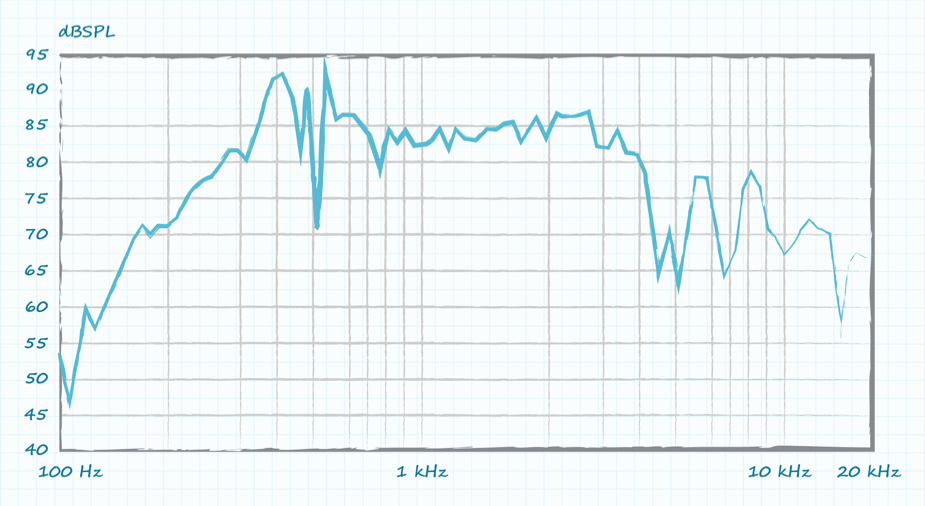
Audio Frequency Range and Enclosure Design
Having now covered the basics of audio frequency, how does the audio frequency range affect enclosure selection or design? In practice, the audio range impacts enclosure design in several ways.
Size of Speaker and Enclosure
A smaller speaker can move faster, so it can more accurately produce higher frequencies while reducing unwanted harmonics. Outlined in our blog about designing micro speaker enclosures, a smaller speaker also means a correspondingly smaller enclosure, saving space and cost in materials. See also The Critical Role of Rear Enclosures in Miniature Speakers.
To create the same dB SPL at extremely low frequencies, a larger diaphragm is needed to move sufficient air. This is because of the inherent challenges of moving enough air to match the same perceived dB SPL as higher pitches. On the positive side, the increased weight of a larger diaphragm is not as much of an issue at the lower frequencies where it is moving much slower.
Resonance
Most objects have a resonant frequency - or a frequency at which an object naturally wants to vibrate. A guitar string, for example, when it is plucked, will vibrate at its resonant frequency. If you were to play the resonant frequency with a speaker near the guitar string, it would start to vibrate and increase in amplitude with time. This same phenomenon occurs with other objects, and in regards to audio, can cause unwanted rattles and buzzing with surrounding objects. Our blog on resonance and resonant frequency covers this topic in greater detail.
When designing an enclosure, you need to ensure that the enclosure itself does not have a natural resonant frequency in the same range as the expected audio output or the speaker itself will have both a non-linear output and unwanted harmonics. At the same time, controlling the resonance of a box, or widening the resonance range, is sometimes sought after, depending on the application.
Materials
The design of speakers and microphones is an interesting balance of parts that need to remain still, need to flex, and need to remain rigid while moving. For speakers in particular, the cone, or diaphragm, needs to be as light as possible to respond quickly but also needs to be as rigid as possible so it can move without deformation. The most common materials used with Same Sky’s speakers are paper and mylar. They are both extremely light and stiff, but mylar, being a type of plastic, is also resistant to moisture and humidity. There is also the rubber that connects the diaphragm to the frame. This should be strong to withstand extreme movement without breaking, while also being as pliable as possible to not interfere with the movement of the cone.
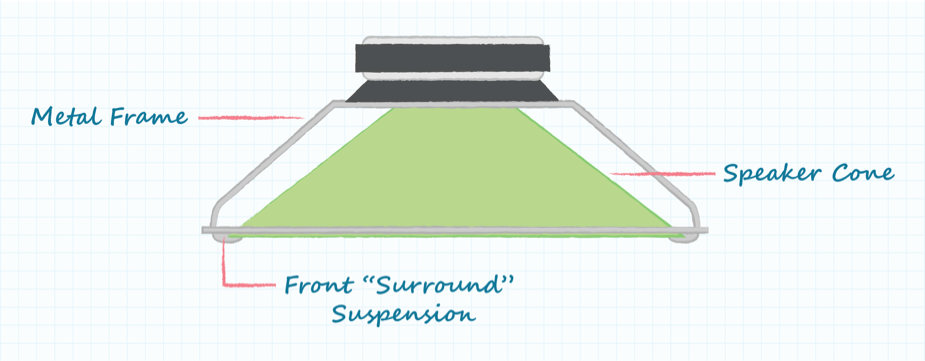
This trade-off in sensitivity, frequency range, robustness, and SPL range is also true with microphone materials. Microphones can be simple electret or MEMS microphones with sufficient yet limited frequency and sensitivity but with durability, small size, and low power requirements. On the opposite end of the spectrum, ribbon microphones that use a thin metallic ribbon as a diaphragm are renowned for their sensitivity and frequency range. As a trade-off, they are so fragile that they cannot be used for many percussive instruments nor should they be carried without a cover on them, lest the diaphragm tears. Same Sky does offer both electret condenser and MEMS microphone options with wide operating frequencies that span the entire audio frequency range from 20 to 20,000 Hz.
The trade-offs required for these, in addition to the cost of different materials, varies for different audio ranges. Lower range speakers do not need to worry about the cone weight as much but will need suspensions that are capable of larger amounts of movement.
The type of material used for an enclosure will also affect the resonance and sound absorption. When designing an enclosure, whose primary role is to dampen the out-of-phase rearward generated sound, an engineer will want a material that effectively absorbs the sounds. This is more important with lower frequency sound that is harder to dampen.
Final Design Considerations for Audio Frequency Range
It is important to note that very few systems and no individual speaker and enclosure will offer the full range of audio with any level of fidelity. In particular, the extreme frequencies require special speakers and enclosures, but for truly accurate reproductions, there needs to be a balance of speakers at every range that is tuned to create the most linear output.
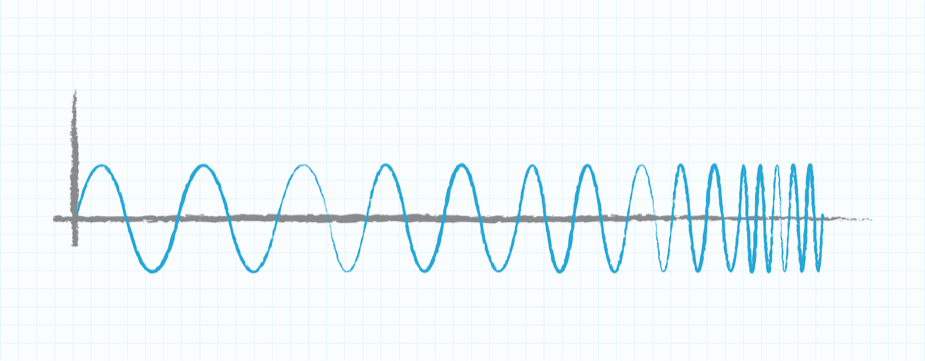
Second, the majority of applications do not require this level of fidelity and a linear output may not be the desired result. For example, a phone only needs to cover the basic human vocal range and even when doubling or tripling the frequency range to accommodate harmonics, it still falls well short of the 20 Hz to 20 kHz range. Another example would be notification or security applications, which need only a buzz, warble, or screech in a very small frequency range but at various SPLs. For these designs, buzzers or sirens that shift the trade-offs away from frequency range and more toward cost, size, power, and loudness are a good option.
Ultimately, only an individual can be aware of the full constraints of their project and making decisions on trade-offs are an essential part of being an engineer and designer.
Conclusion
The audio frequency range is a large, though not the only, portion of design and component selection with speakers, buzzers, enclosures, and microphones. A fundamental understanding of this range, what it implies in recording or reproduction applications, and how they are related to the physical limitations and constraints of all audio related equipment will inform the design process. The wide variety of audio components from Same Sky will provide solutions for many different applications with different frequency ranges.

